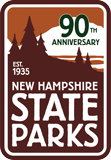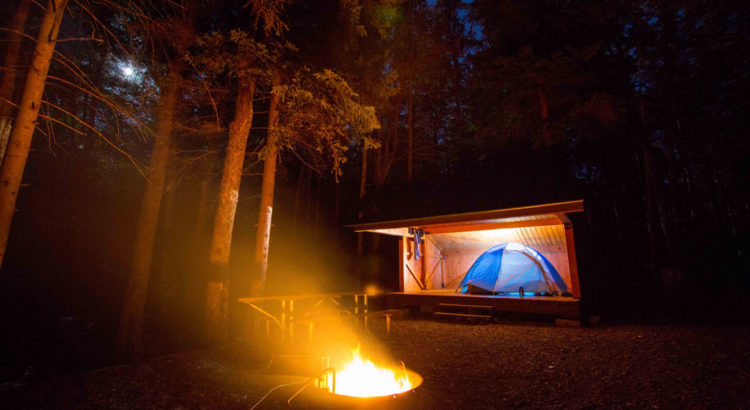By Kyle Krupa, SCA Interpretive Ranger at Pawtuckaway State Park
There are few outdoor traditions as time-honored as a good campfire ghost story. It’s a rush that’s undeniable to many: to have our deepest anxieties prodded in the most vulnerable of locations (huddled around a dim dying flame, the dark wilds of the world pressing against your back). And as a State Parks Interpreter, I’d be shocked if I didn’t hear a resounding “Yes!” every time I asked a group of people “Would you like to hear a ghost story about the park?” To my immense disappointment though, there doesn’t seem to be much supernatural folklore relating to the parks I work at (If any readers have stories to the contrary, I would love to hear!) So being an ardent storytelling and a half decent fibber, I’ve taken liberties in crafting a few of my own haunted tales that I pass on to guests. Of course my greatest hurdle in imparting spooky stories onto visitors is that I am first and foremost an educator. I have to be careful about the content of my stories so they do not accidentally contradict important factual information about the park.
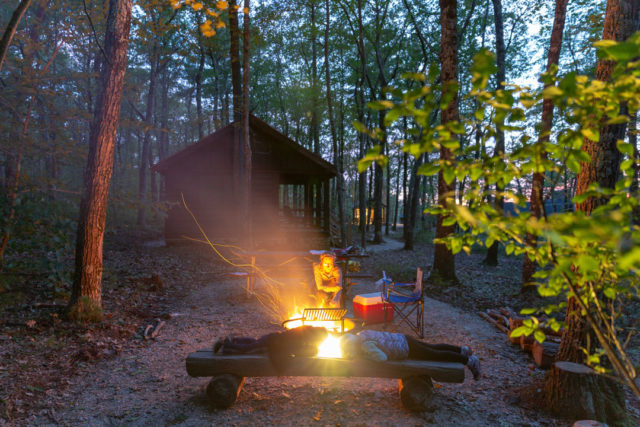
This is where you the reader comes in though: Someone who isn’t bound by stable information and who might just want to get a rise out of some friends and family around a campground fire pit. I’ve compiled what I think are four effective guidelines for crafting your own spooky tale while visiting a New Hampshire State Park. Because as we all know, a good ghost story makes the places we explore all the more mysterious and intriguing…and every ghost story’s better when you suddenly find yourself in the middle of where its taken place…
1: Base your story off the land
The best place to start with creating a spooky story is typically the location. What better way to give a listener context than by simply pointing to a distant mountaintop, an eerie looking tree, or a decayed stone structure and saying ominously “It happened over there…” This context will also be an important beginning point, in your own process of creating a believable narrative. State Parks are bursting at the seams with natural features and historical landmarks that are just waiting for someone to come along and be inspired by them.
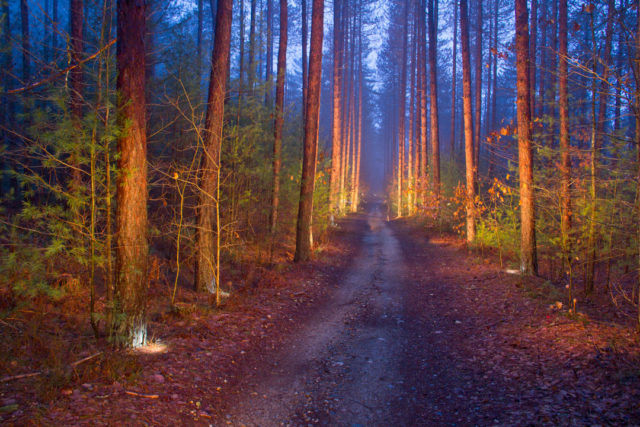
Take one of my own recent stories as an example: Out in the marshes of Bear Brook State Park, there’s a lone tree that stands amongst the swamp grasses with two perfect 90º bends in its trunk. It’s close enough to the roadways where it’s easy to see but too inconvenient to casually walk out to and inspect up close. It’s a minor feature but one that raises just enough question to make it fertile ground for story-weaving. Why is the tree this way? Are there more like this one in the forest? Has anyone tried walking out to it? Just how many ticks are between that tree and I right now? All great places to start for your burgeoning tale.
2: Utilize local history
Now that you’ve assumedly found a feature of the parks that you want to base your story around, a little background digging is going to go a long way. On top of breathtaking and varied landscapes of the state parks, a deep natural and cultural history is attached to just about every aspect of the land. There’s endless fun to be found in diving through a past spanning anywhere between the always creepy and ripe for ghostly origins colonial settlement period to the modern tales of backcountry hikers gone missing. Your story can mix and match these pasts to produce something both truly hauntingly unique and intrinsically connected to the park you’re in.
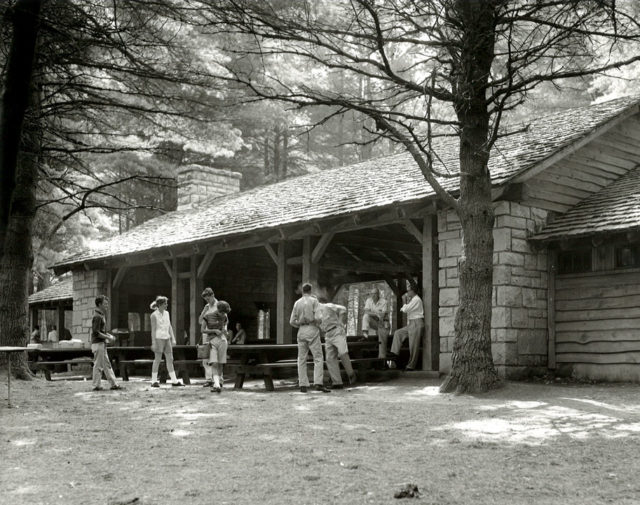
Swinging back to my bent tree tale, I decided to combine several points of the park’s history in order to answer the questions I had about the tree. An online search showed me that there are some inconclusive theories about the phenomenon of bent trees. One theory is that the native people’s of New England would develop these trees in order to mark routes through the woods (There are confirmed instances of this type of native trail marking out west in areas like Colorado). So I took that theory and ran with it as the base of my story’s mythology: “Some say that there’s a trail of these trees going out further into the marsh, from the tree you see here. It’s said that if someone were to follow this trail to the end that their spirit would be consumed by the forest and their ghost would be cursed to walk the bent-tree trail for eternity.”
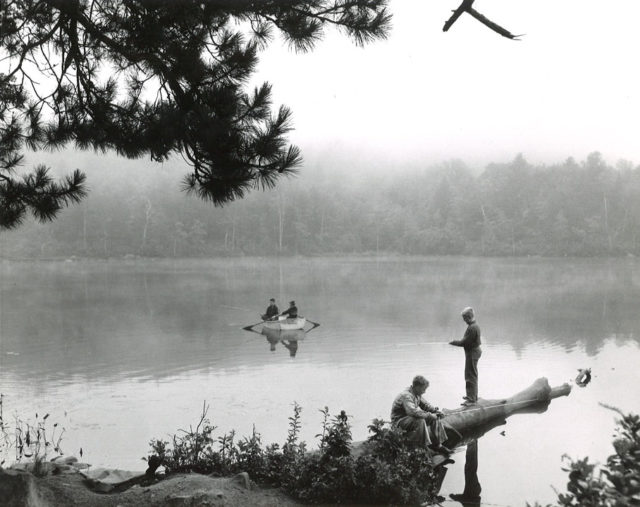
I then took a more recent history, the resident SCA & Americorps program at Bear Brook, and gave my story it’s starring character: A former assistant program director at the Bear Brook camp named “Vinnie”. Naturally, Vinnie is a curious superstitious person who decided one day to head down the Bent-Tree trail. A missing person’s report ensued and sadly, poor Vinnie was never found. Most likely a ghost wandering the forest and the Bear Brook camp.
You can do this sort of thing with any location. Want to plop your ghost on the side of Mount Washington? Make it a missing mountaineer. The boulder fields at Pawtuckaway? An under cautious rock climber who met a tragic end. That all being said, I would recommend doing all of this with an appropriate level of respect. Untimely deaths and missing persons are a reality of the outdoors. Always be sensitive about your audience and basing your tales around real historical peoples and individuals.

3: Create details for your ghost
Now you’ve got ghost. Congrats!…well almost. The difference between a just a sad story and a ghost story is the reoccurring encounters with your newly formed entity. How/when does your ghost appear? What does it do? Maybe the encounters relate to what it was doing before it became a ghost. Maybe there was a watcher in one of the state’s old Firetowers who went missing under mysterious circumstances. One night, people started noticing moaning and an occasional flickering of light in the tower they went missing from. Sprinkle in little details like these to breath some real life into your story that is otherwise about the exact opposite of life.

4: Make it personal
A ghost story is made all the more chilling and believable if it’s being told by somebody (or somebodies) who’ve experienced/known the ghost first hand. This gives the storyteller some implied credibility and allows you to spice things up with some additional “firsthand” details.
For the sake of my Vinnie story, it turned out that my old pal Vinnie and I happened to go way back. Since he was from the same program as me, I could tell you quite a bit about Vinnie personally and if you have some doubts about if poor Vinnie was a real person, just ask some of the other SCA interpreters at Bear Brook. During the time I was telling the Vinnie story to kids visiting the park, I was able to rope in a couple other coworkers there to at least not contradict the existence of Vinnie, if asked by curious ghost researchers. This is something that I highly recommend to try as well. See if you can get 1 or 2 corroborators to make the story of your own encounter and connection to the ghost all the more solid. Maybe even have someone hiding out in the bushes make a rustle or a moan while you begin to close your story out…
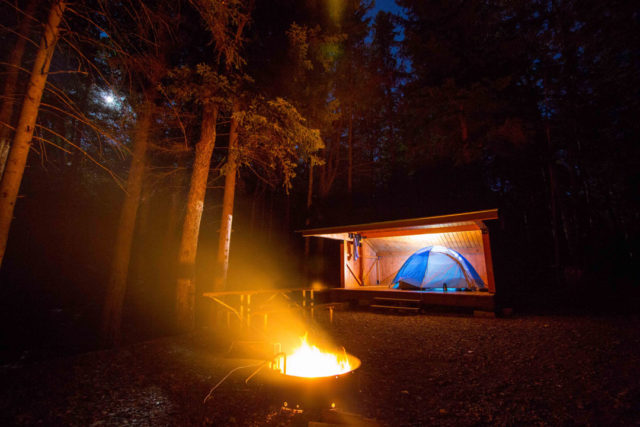
Well there you have it! A four step recipe for your very own State Parks Ghost story. Use them to scare your friends on the next backcountry expedition or to create a little extra awe and wonder on your day hike up to that creepy shack in the woods. And if you’re not the story-weaving type but you’ve read this far (firstly I’m impressed) feel free to spread the story of “Vinnie and the bent-tree trail” if you find yourself walking through the deeper reaches of Bear Brook. Stay safe out there and whatever you do don’t follow those bent trees into the swamp!
